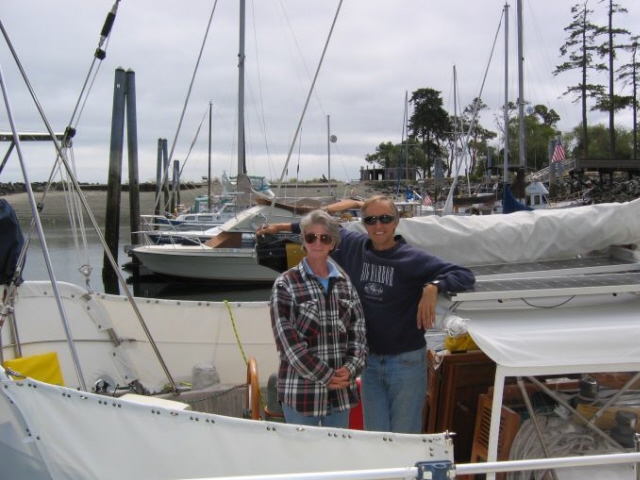
WASHINGTON
Here's a selection of photos taken during the Washington portion of Kavenga's cruise southward toward Mexico.

Here we are, happy to have completed the first leg of our cruise, a whopping 12 miles or so to Blake Island State Park. Given that we departed Gig Harbor at mid-afternoon, and had essentially thrown our last round of provisions and equipment on board without proper stowage, we decided it would be prudent to make an early stop to allow us to begin getting Kavenga squared away for rougher waters.
Normally, it is hard to get dock moorage at this island state park this time of the year because of its proximity to Seattle, Tacoma and Bainbridge Island. However, we had some aces up our sleeves in the form of friends Laurie and Dean Singer, who knowing that we were plannning a stop there, arrived a day ahead of us and staked out space at the dock and then allowed us to raft to their emminently comfortable Cruise-A-Home, Troubador.
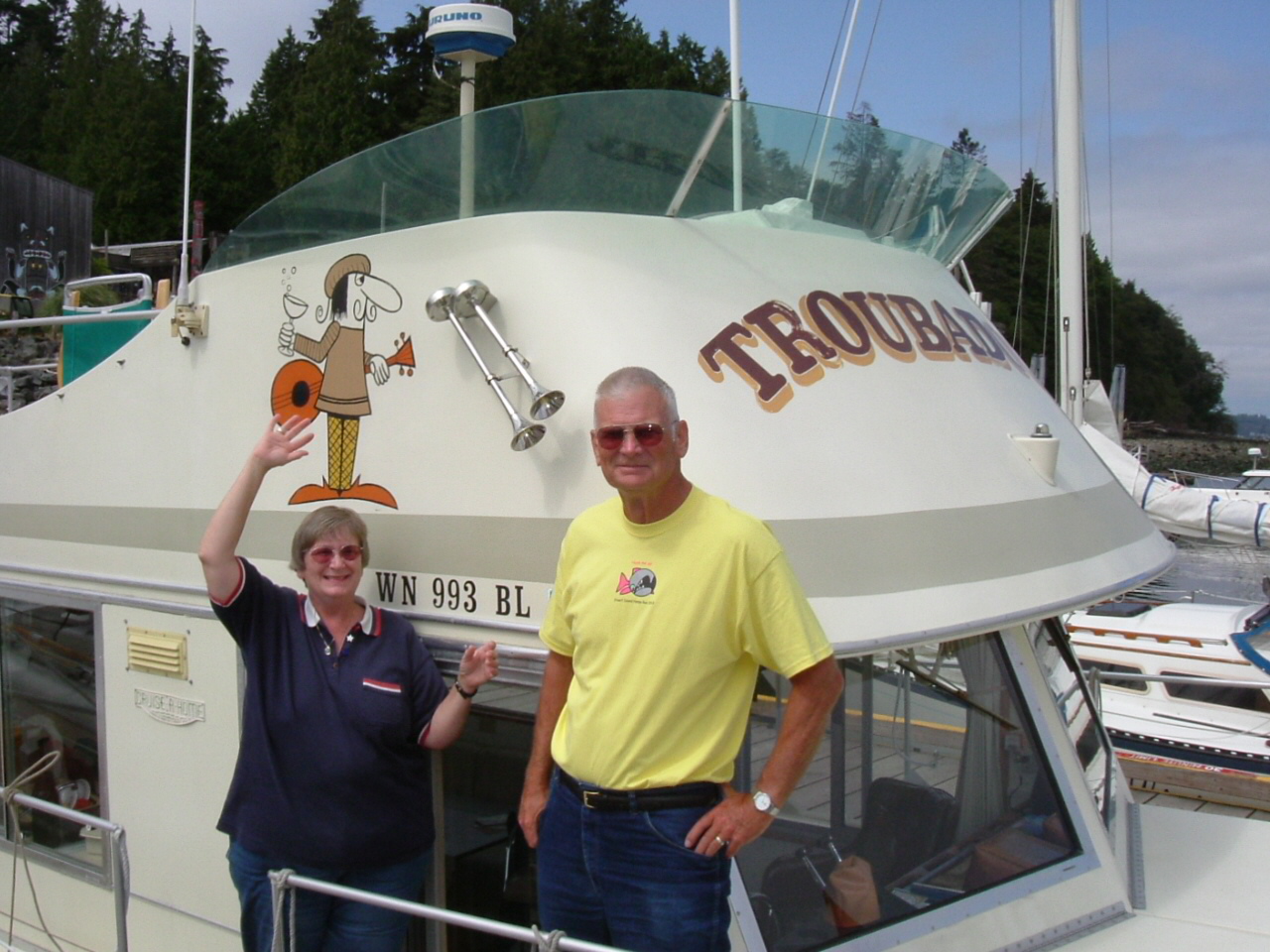
Here's Laurie and Dean
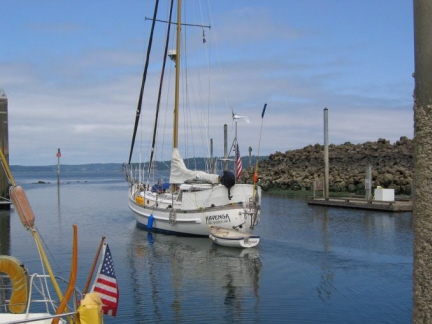
This is a shot they took of us as we departed Blake enroute to Brownsville. How did we get these photos from them? Laurie posted the photos to a photo exchange website and then emailed us the link. We then went to the public library in Newport, Oregon, and using one of their internet connected computers downloaded these photos to a floppy as well as the one by Tom Israelian on the Home page (who sent his an email attachment).
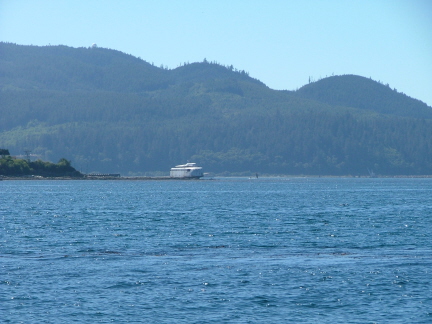
At first we weren't sure what we were seeing as we approached Neah Bay from the Straits of Juan de Fuca. It finally dawned on Steve that it was the old art-deco-style ferry, Kalakala, that had been the subject of much scrutiny and news coverage in Seattle over the last few years. Finally sold at auction and required to leave Seattle's Lake Union, she'd been towed to Neah Bay where the Makah Indian Tribe was allowing her to moor just inside the entrance until her owners could proceed with their plans to turn her into a floating museum. We had an exceptionally smooth trip from Port Angeles to Neah Bay. Most of the time the seas were pure glass, and the ripples you see here were as rough as it got. On our last cruise around the Pacific, this same stretch of water had been the roughest of the entire 24,000 miles.
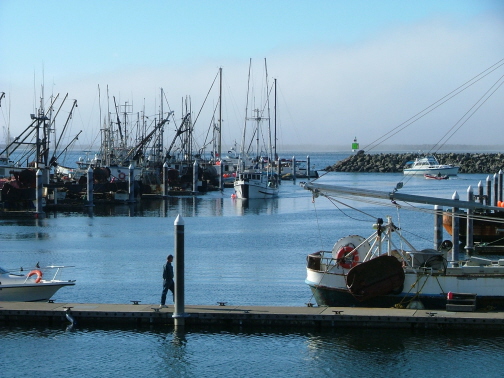
A lot has changed since we last visited Neah Bay and a lot hasn't. The biggest change is the addition of the new, first class, Makah Marina. Here you see about a fourth of it looking from the main ramp out toward the entrance. Kavenga is moored out near the end of A-dock. You can see her mast and roller-furled sails just to the left of the incoming commercial fishing boat.
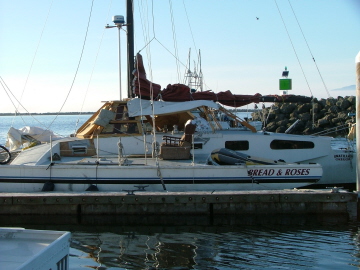
There was a very animated gentleman on the dock at Makah Marina talking to everyone that would listen, and telling them about his trip to Neah Bay from Astoria. This is his trimaran, we were particularly impressed with his Captain's chair.
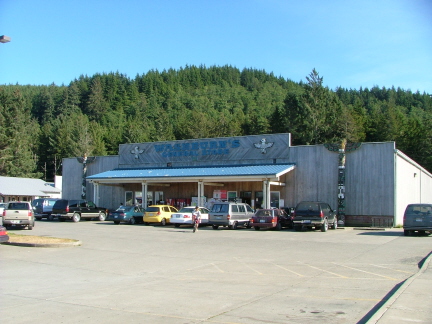
We were pretty well provisioned and ready to head south, but we made one final run to Washburne's General Store. It's a modern store with an old twist. As it's name suggests it has just about everything. It's the only game in town in Neah Bay.
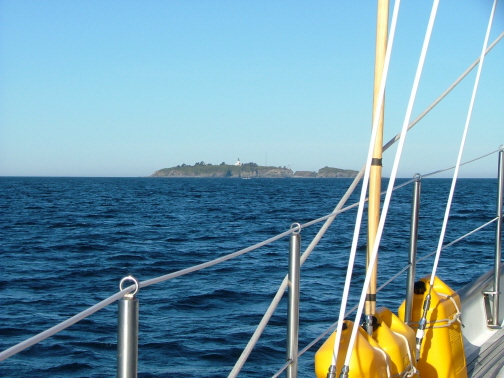
After one night in Neah Bay we were ready to head out into the Pacific. When one rounds Tatoosh Island, seen here, and heads south, you feel like you are finally on your way.
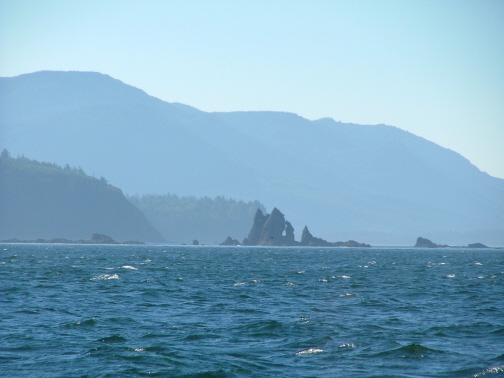
We had mixed blessings on our first day on the ocean. In retrospect, it was mostly a blessing. The weather was absolutely gorgeous. It was actually hot off the coast this day. The only negative was not having enough wind to sail and still make our next planned stop at the right time. But having to motorsail was a small price to pay for the beautiful views we had of the Washington coast, such as this one of the pinnacles near Cape Alava.

On our last cruise we didn't get to see any of the Washington coast due to weather and time of day so it was a real treat to be able to see the Olympics from the "other side". This was taken with a telephoto from about five miles offshore.